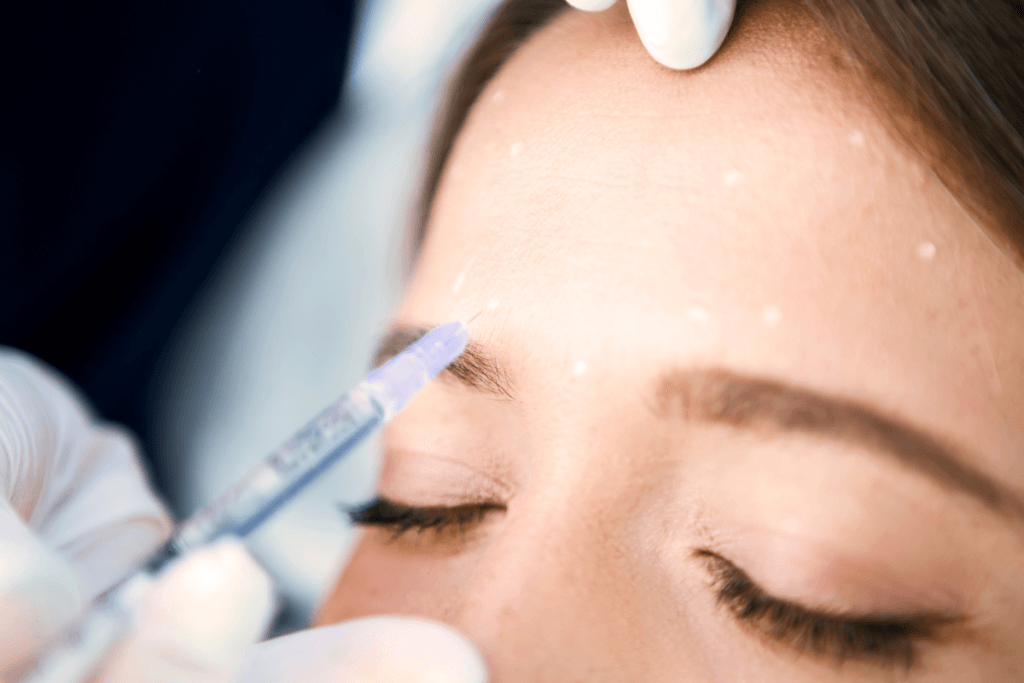In the realm of non-invasive cosmetic and medical treatments, Xeomin stands out as a reputable option for reducing wrinkles and addressing specific muscle disorders. Offering a highly purified form of botulinum toxin type A, Xeomin provides results comparable to other well-known brands like Botox but with its unique formulation. Understanding what Xeomin is and how it can be utilized effectively in clinical practice is essential for healthcare providers considering this treatment for their patients.
How Xeomin Works: A Simplified Approach to Botox
Xeomin is distinguished by its formulation, which contains no unnecessary proteins, providing a “naked” form of the active ingredient. This purity can reduce the risk of the body developing resistance to Xeomin injections over time, making it a viable long-term option for both aesthetic and medical applications, such as treating muscle spasms.
Similar to Botox, Xeomin works by blocking nerve signals to targeted muscles, temporarily reducing muscle contractions. This results in smoother skin when used for wrinkles or relief from conditions like cervical dystonia (neck muscle spasms) and blepharospasm (uncontrolled blinking).
Key Differences: Xeomin vs Botox
When comparing Xeomin vs Botox, one of the key distinctions is Xeomin’s purity. While Botox contains accessory proteins, Xeomin is specifically designed to be free from these extra components. Both treatments are effective in managing dynamic wrinkles caused by repeated facial movements, but some practitioners may find that Xeomin’s minimalistic formula yields superior results for patients who have developed resistance to Botox.
Another notable difference in the Xeomin vs Botox comparison is the onset of action. Both treatments typically take effect within 3 to 5 days, but some healthcare professionals report that Xeomin’s results feel slightly more natural or subtle. However, the overall duration of both treatments is quite similar, lasting between 3 and 4 months before requiring a repeat session.
Furthermore, it is worth considering the cost factors when comparing Xeomin and Botox. While Xeomin cost may be slightly lower in some markets, the overall value should be assessed based on patient outcomes and satisfaction, as well as the potential for reduced antibody development.
Comparing Xeomin vs Dysport
In the discussion of Xeomin vs Dysport, it is important to note that both serve as alternatives to Botox, but they differ in formulation and how they spread in the body. Dysport, for instance, has a slightly larger diffusion area, making it suitable for treating broader areas such as the forehead. However, Xeomin’s targeted and precise action makes it an excellent choice for smaller areas requiring fine control, such as around the eyes or mouth.
The choice between Xeomin vs Dysport often depends on the specific treatment goals of the healthcare provider and their patients. Both products are effective, but clinical outcomes may vary based on the areas being treated and the desired effects.
Healthcare providers should also consider patient preferences and previous experiences with these products. Many patients have expressed a desire for the most effective solution, leading to inquiries about whether Xeomin or Botox is better suited for their needs.
Benefits of Xeomin for Cosmetic Use
For healthcare professionals treating patients seeking smoother skin, Xeomin provides a natural-looking reduction in fine lines and wrinkles. It is especially effective for dynamic wrinkles, which form due to repeated muscle movements like smiling or frowning.
Healthcare providers may observe noticeable improvements in areas such as:
- Forehead lines
- Crow’s feet
- Frown lines (glabellar lines)
Additionally, the absence of unnecessary proteins in Xeomin may reduce the likelihood of patients developing antibodies, which can sometimes diminish the effectiveness of treatments like Botox over time. Understanding the side effects of Xeomin is essential, as they may vary among patients, but most are generally mild and transient.
Medical Applications of Xeomin
Beyond its cosmetic applications, Xeomin is approved for treating several muscle-related conditions, making it valuable for addressing both aesthetic and medical concerns. Here are some key medical applications:
Cervical Dystonia
Cervical dystonia is a painful condition characterized by involuntary neck muscle contractions, leading to abnormal head movements and postures. Xeomin injections block nerve signals to reduce these contractions, offering relief and improved mobility for patients. Regular administration can help manage symptoms effectively, enhancing the quality of life for those affected.
Blepharospasm
Blepharospasm involves uncontrollable blinking, which can significantly disrupt daily activities. Xeomin helps relax the eye muscles, reducing excessive blinking and restoring normal function. As healthcare professionals, understanding how to administer Xeomin in this context effectively is crucial for patient outcomes.
Upper Limb Spasticity
Upper limb spasticity can lead to stiffness and limited arm movement, often resulting from conditions like stroke or multiple sclerosis. Xeomin relaxes overactive muscles, improving arm mobility and alleviating discomfort. The versatility of Xeomin in treating these conditions highlights its importance in clinical practice.
These medical applications demonstrate Xeomin’s versatility in treating both aesthetic concerns and more serious health conditions, providing patients with relief from painful or disruptive muscle disorders.
How Long Does Xeomin Last?
On average, the effects of Xeomin last around 3 to 4 months, depending on the individual and the treatment area. Over time, muscle activity will gradually return, prompting the need for repeat sessions to maintain desired results.
For medical treatments like cervical dystonia, the duration of relief may vary, and healthcare providers will work closely with patients to determine the appropriate timing for follow-up injections. This ongoing assessment is vital to ensure optimal patient care and satisfaction.
Who Should Consider Xeomin?
Xeomin is an excellent option for patients seeking a purified form of botulinum toxin for either cosmetic or medical purposes. It is particularly suitable for individuals who:
- Desire a natural-looking reduction in wrinkles
- Have developed resistance to Botox
- Are looking for a treatment option free from accessory proteins
As always, it’s crucial for healthcare professionals to consult with patients to determine if Xeomin is the right choice for their specific needs and concerns.
Takeaways
Xeomin offers a unique and purified approach to botulinum toxin treatments, making it an appealing option for healthcare professionals seeking effective solutions for wrinkle reduction or muscle disorder treatment. Whether you’re comparing Xeomin vs Botox or Xeomin vs Dysport, the key differences in formulation and action can help guide clinical decisions based on patient-specific needs.
The benefits of Xeomin injections extend beyond cosmetics, providing therapeutic relief for conditions such as cervical dystonia and blepharospasm, with results that typically last for 3 to 4 months. As you engage in discussions with patients regarding Xeomin treatment options, consider the effectiveness, safety, and overall satisfaction to explore how this product can best serve their health and aesthetic goals.
Frequently Asked Questions (FAQs)
What is Xeomin primarily used for?
Xeomin is used for both cosmetic purposes, such as reducing the appearance of wrinkles, and medical applications, like treating muscle disorders such as cervical dystonia and blepharospasm.
How does Xeomin compare to Botox?
In comparing Xeomin vs Botox, Xeomin is often chosen for its purified formula without accessory proteins, which may reduce the risk of developing resistance over time. Both are effective for wrinkle reduction and medical treatments.
How does Xeomin differ from Dysport?
When evaluating Xeomin vs Dysport, the primary distinction lies in their diffusion characteristics. Dysport spreads over a larger area, making it ideal for broader regions, while Xeomin offers precise targeting for smaller areas.






